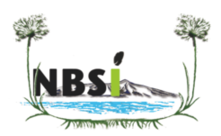International treaties
The most important of several international treaties to which Kenya is a signatory is the Ramsar Convention on Wetlands of International Importance. Naivasha is one of Kenya’s six Ramsar sites, declared under this convention, defined in the Iranian city of Ramsar in 1971. Under this designation, Lake Naivasha was internationally recognised as a natural environment of outstanding environmental quality and biodiversity. The importance of the lake's ecosystem survival and protection go well beyond national boundaries and are relevant for sustaining long distance bird migration across the continent, from southern Africa to Central and southern Asia, as well as to Europe across the Mediterranean Sea.
Being a sort of 'distinction' (a gold medal), the Ramsar site designation does not impose an obligation onto national or local governments, neither does it imply a mechanism to mobilise resources coming from the international community for its protection. The future of the sites is therefore left to the good-will of local and national governments and to the initiatives mobilised by their residents.
The Ramsar Convention Bureau, based in Gland (Switzerland) provides a series of policy documents, management guidelines and often offers direct advice and advocacy to pressure groups and to local organizations concerned with conservation management. A distincitve policy line followed by the Bureau is the one of "Wise Use" implying that Ramsar sites should not be managed as radical conservatories restricting people's access, but should promote "wise" sustainable development activities centred around a strict preservation of the Natural capital and of the ecosystem services that it provides.



